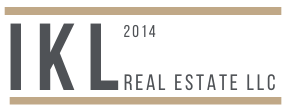Buying a home is a significant milestone, especially for first-time buyers. However, navigating the world of mortgages can be daunting due to the myriad of options and financial jargon. This guide aims to demystify the process, helping you make informed decisions that best suit your financial situation and homeownership goals.
When considering mortgage options, the first step is understanding the different types of mortgages available. The most common types include fixed-rate mortgages, adjustable-rate mortgages (ARMs), and government-backed loans such as FHA, VA, and USDA loans. Each has its own set of advantages and potential drawbacks.
A fixed-rate mortgage is perhaps the most straightforward and stable option. With a fixed-rate mortgage, the interest rate remains constant throughout the loan term, which can range from 10 to 30 years. This stability means your monthly payments will stay the same, making budgeting easier. This type of mortgage is ideal for buyers who plan to stay in their home for a long period and prefer the predictability of consistent payments.
In contrast, an adjustable-rate mortgage has an interest rate that can change periodically, typically in relation to an index. ARMs often start with a lower initial interest rate compared to fixed-rate mortgages, making them attractive to buyers who expect to sell or refinance before the adjustment period begins. However, the interest rate and monthly payments can increase significantly over time, introducing an element of uncertainty. It’s crucial to understand the terms of the adjustment period and caps on rate changes when considering an ARM.
Government-backed loans are designed to make homeownership more accessible, particularly for first-time buyers and those with lower credit scores. The Federal Housing Administration (FHA) offers loans that require lower down payments and more lenient credit requirements. Veterans Affairs (VA) loans are available to veterans and active military personnel, offering benefits like no down payment and competitive interest rates. The U.S. Department of Agriculture (USDA) provides loans for rural homebuyers with low to moderate incomes, often with no down payment required.
Beyond the type of mortgage, interest rates and loan terms are crucial factors. Interest rates can significantly affect the overall cost of your mortgage. Even a slight difference in the interest rate can add up to thousands of dollars over the life of the loan. Rates can be influenced by various factors, including your credit score, down payment size, and current market conditions. It’s advisable to shop around and compare rates from different lenders to ensure you’re getting the best deal.
Loan terms, typically 15 or 30 years, also play a critical role. A 30-year mortgage will have lower monthly payments compared to a 15-year mortgage but will cost more in interest over the life of the loan. Conversely, a 15-year mortgage will have higher monthly payments but save you money on interest in the long run. Consider your financial situation and long-term goals when deciding on the loan term.
The size of your down payment is another essential consideration. While traditional mortgages often require a 20% down payment, many lenders offer loans with lower down payment requirements. However, if you put down less than 20%, you may be required to pay Private Mortgage Insurance (PMI), which protects the lender in case of default. PMI can add to your monthly mortgage costs, so it’s important to factor this into your budget.
In addition to the down payment, there are closing costs and other fees associated with obtaining a mortgage. These can include origination fees, appraisal fees, and title insurance, among others. Closing costs typically range from 2% to 5% of the loan amount. It’s important to budget for these expenses and ask your lender for a detailed breakdown of all costs involved.
Before you start house hunting, it’s beneficial to get prequalified or preapproved for a mortgage. Prequalification provides an estimate of what you might be able to borrow based on your financial situation, while preapproval involves a more thorough evaluation of your credit and finances, resulting in a conditional commitment from the lender. Preapproval can give you a competitive edge when making an offer, as it shows sellers that you are a serious and qualified buyer.
Selecting the right lender is as important as choosing the right type of mortgage. Look for a lender who offers competitive rates, transparent terms, and excellent customer service. You might consider traditional banks, credit unions, or online mortgage lenders. Read reviews, ask for recommendations, and consult with multiple lenders to find the best fit for your needs.
Understanding your mortgage options is crucial for making informed decisions as a first-time home buyer. By familiarizing yourself with the different types of mortgages, interest rates, loan terms, and associated costs, you can navigate the home-buying process with confidence. Remember to consider your financial situation, long-term goals, and personal preferences when choosing a mortgage. With careful planning and research, you can secure a mortgage that supports your journey to homeownership and sets you up for long-term financial stability.

